You searched for: %EC%97%90%EB%B3%BC%EB%A3%A8%EC%85%98%EC%BD%94%EB%A6%AC%EC%95%84%20%EC%84%9C%EB%B2%84%20DK22.TOP%20%EC%BD%94%EB%93%9C6520%20%ED%95%84%EB%A6%AC%ED%95%80%EC%B9%B4%EC%A7%80%EB%85%B8%20%EC%86%94%EB%A0%88%EC%96%B4%EC%B9%B4%EC%A7%80%EB%85%B8%20solaire%20%EC%9D%B8%ED%84%B0%EB%84%B7%20%EB%B0%94%EC%B9%B4%EB%9D%BC%EC%82%AC%EC%9D%B4%ED%8A%B8%20%EC%98%A8%EB%9D%BC%EC%9D%B8%20%EC%B9%B4%EC%A7%80%EB%85%B8%20%EC%8A%AC%EB%A1%AF%20%EB%A8%B8%EC%8B%A0%20qoE
<< Previous | Displaying results 176-200 of 534 for "%EC%97%90%EB%B3%BC%EB%A3%A8%EC%85%98%EC%BD%94%EB%A6%AC%EC%95%84%20%EC%84%9C%EB%B2%84%20DK22.TOP%20%EC%BD%94%EB%93%9C6520%20%ED%95%84%EB%A6%AC%ED%95%80%EC%B9%B4%EC%A7%80%EB%85%B8%20%EC%86%94%EB%A0%88%EC%96%B4%EC%B9%B4%EC%A7%80%EB%85%B8%20solaire%20%EC%9D%B8%ED%84%B0%EB%84%B7%20%EB%B0%94%EC%B9%B4%EB%9D%BC%EC%82%AC%EC%9D%B4%ED%8A%B8%20%EC%98%A8%EB%9D%BC%EC%9D%B8%20%EC%B9%B4%EC%A7%80%EB%85%B8%20%EC%8A%AC%EB%A1%AF%20%EB%A8%B8%EC%8B%A0%20qoE" | Next >>
-
Greece - Photograph
Media EssayMore than 80 percent of Greece's prewar Jewish population was murdered during the Holocaust.
-
Greece - Maps
Media EssayGermany, Italy, and Bulgaria occupied parts of Greece and divided the country into zones in 1941. The fate of the Jews in Greece often depending on the policies of the occupying force. More than 80 percent of Greece's prewar Jewish population was...
-
Berga-Elster ("Schwalbe V")
ArticleAt the Berga-Elster subcamp of Buchenwald, prisoners were forced to do dangerous and brutal work in tunnels to support fuel production for the German war effort.

-
1943: Key Dates
ArticleExplore a timeline of key events during 1943 in the history of Nazi Germany, World War II, and the Holocaust.

-
Charles E. Coughlin
ArticleCharles Coughlin, Catholic priest and populist leader, promoted antisemitic and pro-fascist views. In the 1930s, he was one of the most influential public figures in the US.
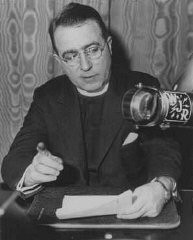
-
Dismissal letter from the Berlin transit authority
DocumentA letter written by the Berlin transit authority (Berliner Verkehrs Aktiengesellschaft) to Viktor Stern, informing him of his dismissal from his post with their agency as of September 20, 1933. This action was taken to comply with provisions of the Law for the Restoration of the Professional Civil Service. On April 7, the German government issued the Law for the Restoration of the Professional Civil Service (Gesetz zur Wiederherstellung des Berufsbeamtentums), which excluded Jews and political opponents…

-
Janka Glueck Gruenberger
ID CardJanka was one of seven children raised in a Yiddish-and Hungarian-speaking household by religious Jewish parents in the city of Kosice. In 1918, when she was 20 years old, Kosice changed from Hungarian to Czechoslovak rule. Three years later, Janka married Ludovit Gruenberger, and their three children were born Czech citizens. 1933-39: Janka was an accomplished milliner, and she helped her husband run a tailoring business from their apartment. Like many Jews in Kosice, Janka and Ludovit were upset when…
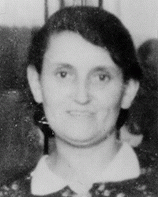
-
Mendel Grynberg
ID CardMendel was raised in a large, Yiddish-speaking, religious Jewish family in Sokolow Podlaski, a manufacturing town in central Poland with a large Jewish population of about 5,000. Upon completing school, Mendel worked as a shoemaker. He was also active in a local Zionist organization. 1933-39: Mendel was married and had a family when the Germans invaded Poland on September 1, 1939. Aircraft bombed the town's market and other civilian targets before victorious German troops marched into Sokolow Podlaski on…
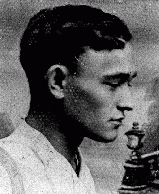
-
Grietje Polak
ID CardGrietje was born to a large religious Jewish family in Amsterdam. When she was in her mid-20's, she married Frederik Polak, an accountant. The Polaks had a son, Jacob, and three daughters, Julia, Betty and Liesje. They lived in simple quarters on the second floor of a house. 1933-39: Creating an atmosphere of Jewish observance in the home was important to Grietje and her husband. They loved to celebrate the Sabbath and the Jewish holidays with their four children. Grietje taught shorthand and needlepoint…

-
Wolfgang Kusserow
ID CardWhen Wolfgang was an infant, his parents became Jehovah's Witnesses. His father moved the family to the small Westphalian town of Bad Lippspringe when Wolfgang was 9. Their home became the headquarters of a new Jehovah's Witness congregation. Wolfgang and his ten brothers and sisters grew up studying the Bible daily. 1933-39: The Kusserows were under close scrutiny by the Nazi secret police because of their religion. As a Jehovah's Witness, Wolfgang believed that his highest allegiance was to God and His…

-
Gregor Wohlfahrt
ID CardGregor was the second of six children born to Catholic parents in a village in the part of Austria known as Carinthia. His father was a farmer and quarryman. Disillusioned with Catholicism, his parents became Jehovah's Witnesses and raised their children according to that religion. As a boy, Gregor loved mountain climbing and skiing. 1933-39: Gregor attended school and worked as a waiter. The situation for Jehovah's Witnesses worsened after Germany annexed Austria in March 1938; Witnesses refused to swear…
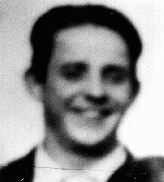
-
Mayer List
ID CardMayer was born into a Jewish family in a village near Warsaw. His family was active there in the workers' movement. They decided to emigrate when Mayer was a child; his father hoped to find work in Argentina. As a young man, Mayer was arrested for being a communist. In prison, he organized a hunger strike. The police released him to keep him from recruiting the other prisoners to communism. 1933-39: Mayer joined one of the International Brigades and went to Spain to fight in the civil war against Franco…

-
Gideon Boissevain
ID CardGideon was known affectionately as "Gi" by his family and friends. His parents were descended from the Huguenots, French Protestants who came to the Netherlands in the 16th and 17th centuries. Gi had two brothers and two sisters, and his father worked in the insurance business. 1933-39: Gi had a large circle of friends, both Christians and Jews, and after school they all liked to get together. He and his friends enjoyed taking bike trips, having parties, and playing records. In the mid-1930s his parents…
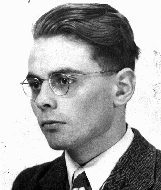
-
Eva Heyman
ID CardThe only child of a cosmopolitan Hungarian Jewish couple, Eva grew up in a city on the border between Romania and Hungary. Nearly one-fifth of the city's population was Jewish. Eva was a small child when her parents, Agi and Bela, divorced, and she went to live with her grandparents. 1933-39: After the divorce, Eva saw little of her mother, who remarried and moved to Budapest. She also rarely saw her father, who lived on the other side of the city. Eva lived with her grandmother and grandfather near the…
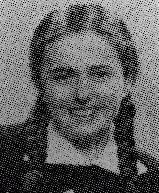
-
Dawid Sierakowiak
ArticleYoung people's diaries capture some of the most heartbreaking experiences of the Holocaust. Learn about the diary and experiences of David Sierakowiak.
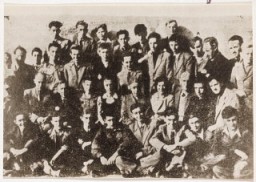
-
Adolf Hitler: Early Years, 1889–1913
ArticleUnder Adolf Hitler, the Nazi regime would be responsible for the murder of 6 million Jews and millions of other victims. Learn about Hitler's early years.

-
Theresienstadt: Establishment
ArticleLearn about the establishment of the Theresienstadt camp/ghetto, which served multiple purposes from 1941-45 and had an important propaganda function for the Germans.

-
Jewish Communities of Prewar Germany
ArticleBefore the Nazi rise to power, Jews represented less than 1% of Germany's population. Learn more about Jewish communities in Germany before the Holocaust.

-
Lublin/Majdanek Concentration Camp: Administration
ArticleIn 1940, the Nazis established Lublin (Majdanek) concentration camp in Lublin, Poland. Learn more about camp administration.
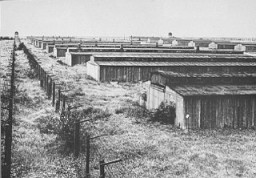
-
Return to Europe of the St. Louis
ArticleIn May 1939, the St. Louis set sail from Germany to Cuba. Most of the passengers, fleeing Nazi Germany, were denied entry. Learn more about their fates.
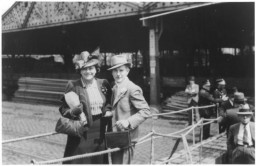
-
Emigration and the Evian Conference
ArticleIn July 1938, 32 nations met in Evian, France, to discuss immigration policies for Jewish refugees fleeing Nazi Germany. Learn how these discussions impacted Jewish lives.
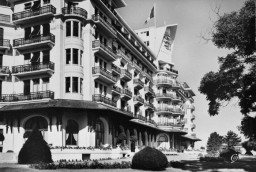
-
Nazi Terror Begins
ArticleAfter rising to power in January 1933, the Nazis began the process of moving Germany from a democracy to a dictatorship. Learn more.

-
Recognition of US Liberating Army Units
ArticleLearn about US Army Divisions that have been recognized as liberating units by the United States Holocaust Memorial Museum and the US Army's Center of Military History.
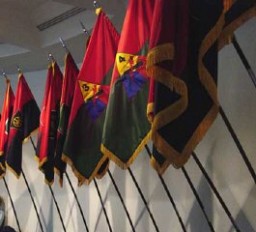
-
Resistance inside Germany
ArticleSome individuals and groups in Germany attempted to resist Nazism, despite the risk of being caught and facing punishment. Learn more about their efforts.
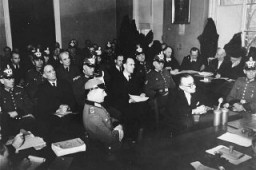
-
1938: Key Dates
ArticleExplore a timeline of key events in the history of Nazi Germany during 1938.

